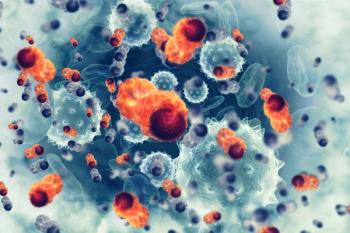
Jacqueline Feinberg, MD, Discusses Common AEs Post–Gynecologic Cancer Debulking
Common symptoms following debulking surgery for gynecologic cancer appear to include pain, diarrhea, and nausea, according to an expert from Memorial Sloan Kettering Cancer Center.
Jacqueline Feinberg, MD, spoke with CancerNetwork® in an interview at
According to Feinberg, a gynecologic oncology fellow at Memorial Sloan Kettering Cancer Center, most patients commonly reported postoperative symptoms of pain. Overall, 60% of patients in the review reported some level of pain, and less than 10% reported symptoms of severe pain. Other symptoms reported in the review included decreased eating in 40% of patients and limitations with walking in 5%. Diarrhea was reported to have occurred in 25% of patients, constipation in less than 10%, mild nausea in 10%, and vomiting in less than 2%.
In the review, 43% of patients underwent primary debulking, 52% had interval debulking, and 5% had debulking for recurrent disease. Moreover, 48% had a bowel resection, 53% had an upper abdominal procedure, and 16% had chest debulking.
Transcript:
We have the symptoms for 188 patients after they recovered from debulking surgery for gynecologic cancer. The most common symptom, as expected, was pain. Most patients reported mild pain in the first 10 days at home after surgery, with fewer than 25% reporting severe pain. And over those 10 days, the pain lessened.
By the time we get to day 10, it’s more like 25% of patients reporting any amount of pain, with severe pain going down to much less than 10% by that point. The other common symptoms were [gastrointestinal]-related. Diarrhea was a very common one [long with] nausea and constipation.
When I say very common, all of these symptoms overall were still reported in an overall smaller percentage of the population. Diarrhea was up to 20% of patients and pretty stable once they were home. Nausea [occurred in] 15% of patients or fewer. And then constipation actually got worse over time, but it was still in fewer than 10% of patients.
Reference
Feinberg J, Zivanovic O, Kim SH, et al. Patient-reported symptoms after debulking surgery and associations with urgent care visits, readmissions, and complications. Presented at: 2023 SGO Annual Meeting on Women’s Cancer; March 25-28, 2023; Tampa, Florida.
Newsletter
Stay up to date on recent advances in the multidisciplinary approach to cancer.
















































































